
The Zero SR/F and the Harley-Davidson LiveWire are perhaps the two most premium American electric motorcycles on the road today. They come from two very different companies but share more similarities than you might expect.
I recently tested both a $21,495 SR/F and a $29,799 LiveWire simultaneously, putting them up against each other to determine which one was the rightful king of the American electric motorcycles.
Zero Motorcycles vs Harley-Davidson
Talking about a Zero vs. Harley-Davidson comparison would have sounded silly just a few years ago. Zero was an electric motorcycle startup and Harley-Davidson was a chromed-out and exhaust-laden beacon of a different time in American motorcycling, at least as far as electric motorcycle riders were concerned.
But now neither of those things are true anymore. Zero has certainly shed its startup status after it first began producing electric motorcycles nearly a decade and a half ago. And Harley-Davidson is rapidly working to change that tired stereotype as it updates its motorcycle lineup to better match the realities of the motorcycle industry today.
As one of the oldest players in the space, Zero certainly leads the electric motorcycle industry in size. But Harley-Davidson is now leveraging its more than 100 years of design heritage as well as its extensive engineering and manufacturing abilities as it becomes the first major legacy motorcycle manufacturer to produce a real electric motorcycle.
So which one takes the crown as the king of the American electric motorcycles? Check out my video comparing the two below, then continue reading for the full breakdown.
Zero SR/F vs Harley-Davidson LiveWire — more similar than different?
I know this might sound odd, but the two bikes actually have a lot in common in the design department.
Both are high-powered and technology-infused naked street bikes with an impressive suite of advanced rider aids. The bikes share IMU-based rider assistance tech that augments riders with lean angle-based traction control and cornering ABS. They both offer four varied ride modes (Sport, Street, Rain, and Eco) that adjust power level, throttle ramping, and regenerative braking, among other slight tweaks.
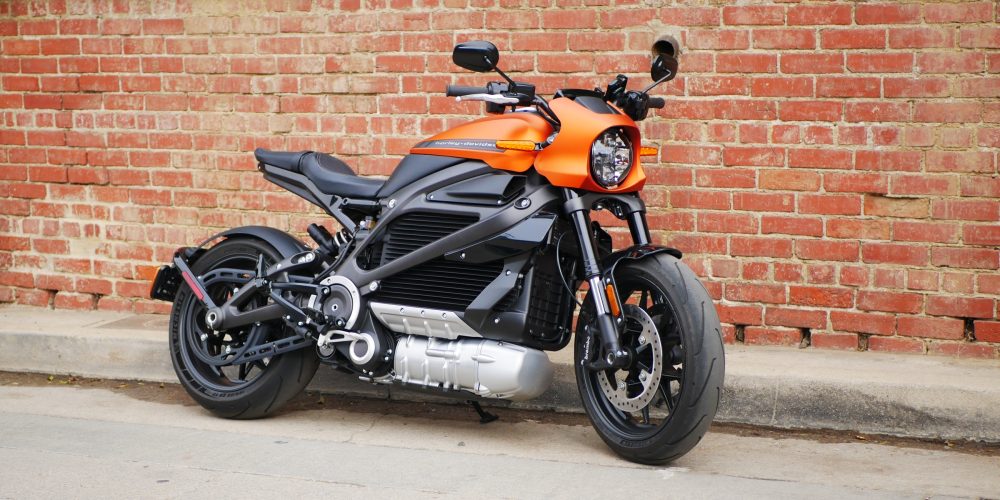
Both bikes sport attractive TFT touch screen displays. Both have fully adjustable Showa suspension. They both have large battery packs of similar size (14.4 kWh on the Zero and 15.5 kWh on the LiveWire), they both share a pair of four piston front hydraulic brakes, though the LiveWire gets a dual piston rear brake, while the SR/F gets a single piston rear brake. The Harley sports Brembo Monoblocks, while Zero sticks with their Spanish J.Juan brakes. Both sides have fans that will argue over which one is better, but suffice it to say, they are both high-end components.
So these two electric motorcycles share a lot of common ground, right? But then again, it’s the differences that we’re most interested in.
And those are easily spotted.

First of all, the Zero SR/F and the H-D LiveWire use radically different drivetrains. Zero’s air-cooled ZForce 75-10 electric motor is coaxially mounted with the rear swingarm, employing a simple but effective direct belt drive. The motor isn’t necessarily emphasized, it’s simply there.
Harley-Davidson stuck to their design legacy of featuring the motor as a central design element. That required a different solution from every other electric motorcycle that employs a simple parallel motor shaft/wheel axle setup. Instead of going with the tried-and-true method, Harley-Davidson’s Revelation electric motor is underslung with its motor shaft perpendicular to the rear axle. The liquid-cooled motor is paired with a 90-degree spiral-cut bevel gear reduction to align its belt drive output with the rear wheel. That bevel gear transmission is also partly responsible for the LiveWire’s unique sound.
Other major design differences include the SR/F’s steel trellis frame versus the LiveWire’s choice of cast aluminum and the LiveWire’s somewhat lower pegs creating a slightly more relaxed seating position compared to the SR/F’s sportier, more aggressive setup.
What about the specs?
I’m not a big fan of straight-up spec comparisons because I believe there is so much more to a bike than just its spec sheet. But that doesn’t mean it’s not still interesting to compare the important numbers.
Speed
Zero wins the top speed contest with 124 mph (200 km/h) compared to the LiveWire’s 110 mph (177 km/h) limit.
Power
This one is a slight win for Zero again, with the SR/F putting out 82kW (110 hp) compared to the LiveWire’s 78kW (105 hp). Power isn’t everything, though, and multiple documented head-to-head acceleration tests have shown the LiveWire out accelerates the Zero with a 0-60 mph time of 3.02 seconds compared to the Zero’s 3.65 seconds. Heck, it even beats a Tesla Model 3!

Range
The spec sheets show Zero winning the range war, with a city range of 161 miles (259 km) and a combined highway/city range of 99 miles (159 km). Compare that to the LiveWire’s city range of 146 miles (235 km) and combined highway/city range of 91 miles (146 km).
However, an interesting range test on a 48-mile mixed city/highway loop in Southern California showed the LiveWire just slightly edging out the Zero with an average efficiency of 155 Wh/mi across its four riding modes compared to the Zero SR/F’s average efficiency of 171 Wh/mi. That means real-world range is pretty darn close, and the LiveWire might take a slight advantage. Though from my testing, I found them to be so darn close that it was pretty much a toss-up. Either way, the temptation to lay into the powerful acceleration is a serious battery drainer on both bikes.
Weight
No contest here, the SR/F’s 498 lb (226 kg) curb weight is nearly 10% lighter than the LiveWire’s 549 lb (249 kg). In my experience, the weight difference wasn’t really noticeable for most of my riding. But when maneuvering the bikes around my garage and hilly driveway, the LiveWire was noticeably heftier.
Charging
Both bikes offer Level 1 charging from a standard 110V wall outlet (or 220V in other countries). The SR/F takes around nine hours to fully charge from empty on a 110V wall outlet, while the LiveWire takes closer to 12 hours. You’ll likely never be charging from empty though, as that would mean you pushed the bike into your garage. Even so, the SR/F should pretty much always be full after an overnight charge, while the LiveWire might not hit 100% by morning, depending on how late you pulled in last night.
For faster charging, the SR/F Premium I was on sported a 6kW Level 2 system that let me recharge completely in under two hours, or closer to one hour when I’d stop somewhere with half a battery.
The LiveWire doesn’t offer Level 2 charging (well technically it does, but only at the slow Level 1 speed). Instead, H-D bet on DC Fast Charging, which can refill the LiveWire in well under an hour. Most people can even charge to nearly full in less than 30 minutes, assuming they didn’t roll in on an empty battery.
It’s hard to compare these two head to head. Which is better, Level 2 or DC Fast charging? Level 2 is slower, but DC Fast charging is more limiting in terms of charging locations. Sure, every H-D dealership that sells LiveWires also has at least one DC Fast Charger on site, but if your city doesn’t have many other options, then that one charging location might cramp your style. Level 2 charging is obviously slower, but you can find Level 2 hookups all over the place (even in your own garage), and the numbers are growing much faster than DC Fast Charging.
As it stood, I charged both bikes almost entirely on Level 1, which is probably enough for most riders. I was perfectly happy with an overnight charge, but it was nice to know that I had options if I need to extend my range or pop out for an unplanned evening ride.

What about the build and ride quality?
To me, this is even more interesting than just a straight-up spec comparison. And it’s also where differences become even more apparent.
I think it’s fair to say that Zero has never made the most beautiful motorcycles. There’s nothing wrong with them, but in order to please as wide an audience as possible, they’ve rarely taken risks in the design department. The SR/F was a welcome change toward a sportier design, but there are still shortcomings. From a bike length or two away, things look great. But when you get closer, you realize that the devil is in the details.
Mmmmm, look at those switches on the LiveWire
While the new TFT screen looks great, the handle bar switches on either side don’t look as nice as those on the LiveWire. In fact, they remind me of some more budget-minded electric motorcycles I’ve ridden. The storage trunk in the faux tank on the SR/F is quite useful (and surprisingly roomy), but the body panels don’t quite line up above it, which constantly bothered me.

In comparison, the LiveWire just feels like a “no expense spared” kind of motorcycle, which might provide some clues regarding its $29,799 price tag. The thumb joysticks, the fit and finish of the faux tank and filler cap, even the sleekness of the rear lights just look a peg or two above Zeros.
The Zero SR/F is a nice-looking bike, but the H-D LiveWire is a work of art. Now whether those details are worth the extra price to you as a rider, that’s a question you’ll have to answer for yourself.
When you get both bikes on the road, the differences are perceptible but not extreme. Both bikes have more than enough power and torque to have you smiling like a kid in a candy shop. Between the two, the SR/F always felt more aggressive to me. Flying down canyons or cruising the Pacific Coast Highway just felt more dramatic, sportier, and more exciting. But perhaps at the cost of comfort.
The LiveWire didn’t give me quite the “22-year-old on a stolen bike” feel, but was just as thrilling while still feeling more comfortable on longer rides. Part of that might have been the higher pegs on the SR/F that would sometimes leave me feeling more cramped than I preferred. Of course now with the Zero SR/S improving upon the SR/F’s comfort marks, I think I’ll need to do another matchup between those two bikes.

Even if the LiveWire didn’t feel quite as aggressive, I often preferred it for canyon riding as it felt a bit more solid in the turns to me. Both bikes are incredibly easy to ride, but the LiveWire just felt like it was taking over for me much of the time — to the point where I would sometimes have to remind myself not to get too complacent. I’m not a big risk taker as it is, and you won’t find me trying to drag knee in every turn, but the LiveWire does give you the confidence to push it harder than you might normally. The SR/F can take you to all the same places and probably more (did you see it fly up Pike’s Peak last year?!), but not in the same magical Sunday afternoon cruise way that I got from the LiveWire.
So what’s the verdict?
Like pretty much everything in the motorcycling world, this is very much a personal choice.
It’s hard for me to pick a winner because there are so many variables.
The SR/F is sportier, and therefore it is often more fun for aggressive riding, while the LiveWire is more comfortable and seems to meld with me more, physically and mentally.
The SR/F gives me faster Level 1 charging and more Level 2 charging options, while the LiveWire has slower Level 1 charging when it is not absolutely binging electrons at a DC Fast Charger.
The SR/F is significantly easier on the wallet at around $21,495, while the LiveWire charges a nearly 50% premium for nicer build quality, slightly better efficiency and more than slightly better acceleration. Oh, and a robust nationwide network of dealers and servicing, which should absolutely be factored into the price.

Ultimately, they’re both amazing bikes and I would be absolutely happy to keep either one in my garage. If I had all the money in the world, I’d buy the LiveWire. But I don’t — I live in the real world and can’t afford a bike that nice. The SR/F isn’t cheap by any means, but it is par for the course when it comes to high-power electric motorcycles and finds itself within the budget of many more riders than the LiveWire.
Either way, both bikes fill me with optimism for the direction of the electric motorcycle industry. They are positively amazing machines that offer thrills I’ve never felt on a gas bike. Now just imagine where we’ll be in a few more years as options expand and prices come down.
While Harley-Davidson surely isn’t going to dent Zero’s sales too much this year, H-D has a series of electric motorcycles in the works to be debuted by 2022, meaning the two companies could be competing head to head more than you’d think.
The future is undeniably bright for electric motorcycle riders everywhere!
FTC: We use income earning auto affiliate links. More.
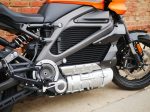

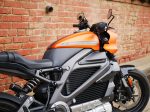
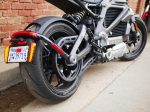

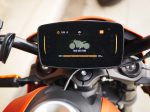
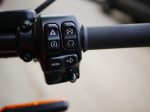







Comments